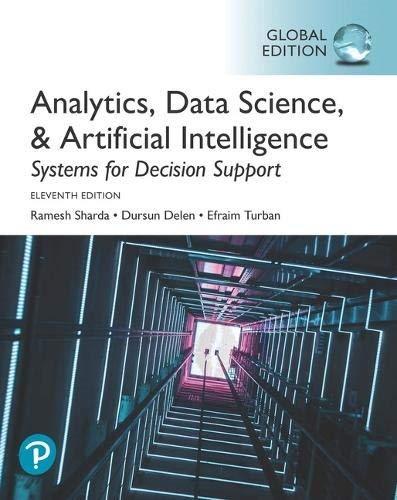Based on the illustrative applications of robots in this section, build a matrix where the rows are
Question:
Based on the illustrative applications of robots in this section, build a matrix where the rows are the robots’ capabilities and the columns are industries. What similarities and differences do you observe across these robots?
For obvious reasons, the military has invested in robotic applications for a long time. Robots can replace humans in places where risk of loss of human life is too great. Robots can also reach areas where humans may not be able to go due to extreme conditions – heat, water, and so forth. Besides the recent growth of drones in military applications, several specific robots have been developed over a long time. Some are highlighted in the next sections.
MAARS MAARS (Modular Advanced Armed Robotic System) is an upgraded version of special weapons observation reconnaissance detection system (SWORDS) robots that were used by the U.S. military during the Iraq war. It is designed for reconnaissance, surveillance, and target acquisition and can have a 360@degree view. Depending on the circumstances, MAARS can drape much firepower into its tiny frame. A variety of ammunition such as tear gas, nonlethal lasers, and grenade launcher can be wrapped in it.
MAARS is an army robot that can fight autonomously thus reducing risk to soldiers' lives while also protecting itself. This robot has seven types of sensors to track the heat signature of an enemy during the day and night. It uses night vision cameras to monitor enemy activities during the night. On command, MAARS fires at opponents. Its other uses include moving heavy loads from one place to another. It provides a range of options from nonlethal force such as warning of an attack. It can also form a two-sided communication system. The robot can also use less lethal weapons such as laughing gas, pepper spray, and smoke and start clusters to disperse crowds. The robot can be controlled from about one kilometer and is designed to increase or decrease speed, climb stairs, and walk on nonpaved roads using wheels rather than tracks.
Step by Step Answer:

Analytics Data Science And Artificial Intelligence Systems For Decision Support
ISBN: 9781292341552
11th Global Edition
Authors: Ramesh Sharda, Dursun Delen, Efraim Turban





